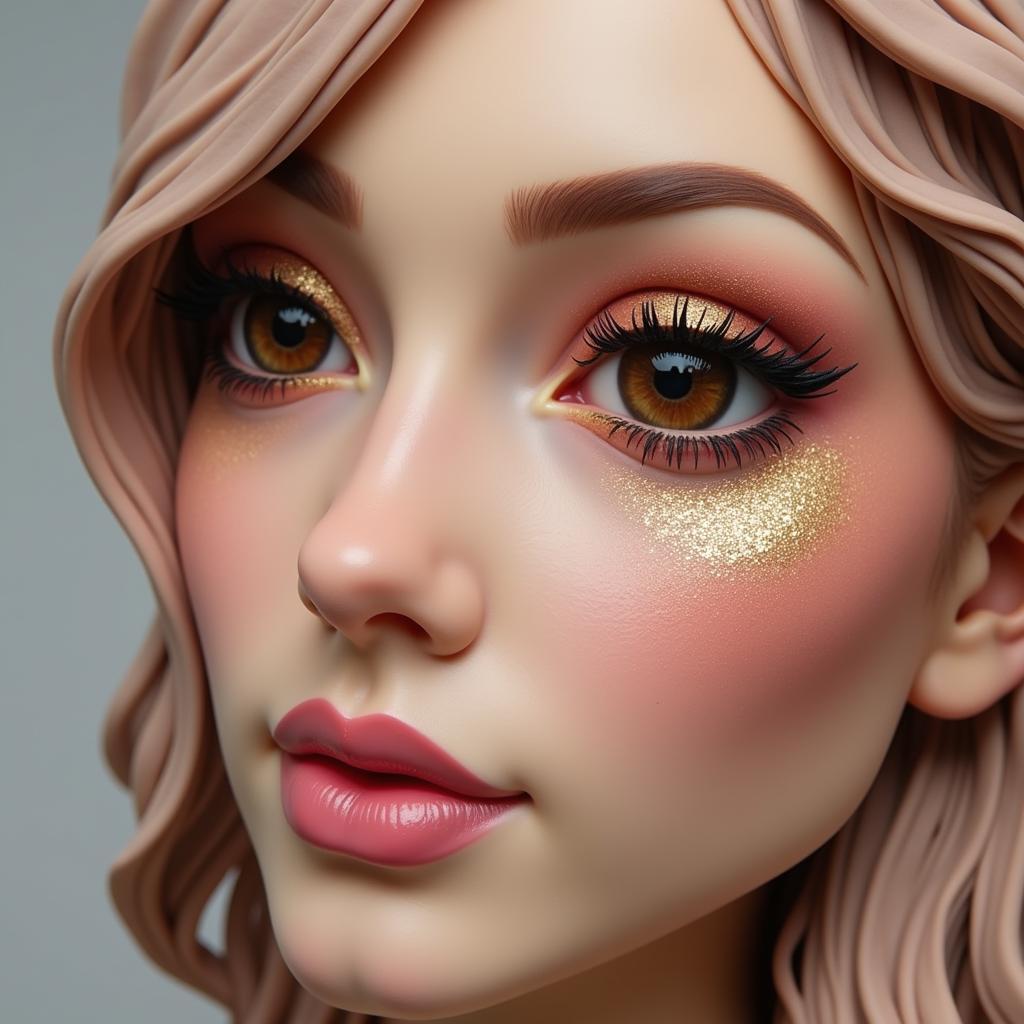Making flesh colored fondant might seem tricky, but with the right techniques, you can achieve a natural and realistic look for your cake decorations. Whether you’re sculpting faces, hands, or other body parts, nailing the right skin tone is crucial for a believable finish.
This comprehensive guide will walk you through the process of creating flesh colored fondant, from choosing the right base color to adding subtle tones and achieving a lifelike appearance.
Starting with the Right Fondant Base
The foundation of your flesh-toned fondant lies in selecting the appropriate base color. While pure white might seem like the obvious choice, it often results in a stark and unnatural look. Instead, opt for a warmer white or ivory shade, as this will provide a more natural base for adding skin tone colors.
Mixing the Perfect Flesh Tone
Achieving a realistic flesh tone involves carefully blending different food coloring gels. Here’s a step-by-step guide:
- Start with a small amount of fondant: Begin with a small ball of your chosen base color, about the size of a golf ball.
- Add a touch of yellow: Introduce a tiny amount of yellow gel food coloring to the fondant. Yellow helps neutralize the starkness of the white and adds warmth.
- Incorporate pink or peach: Gradually add pink or peach gel food coloring, a little at a time, to create a natural skin tone. The exact amount will depend on the desired shade, but remember to add color sparingly and gradually build up the hue.
- Knead thoroughly: Once you’ve added the colors, knead the fondant vigorously for several minutes to ensure the color is evenly distributed.
Pro Tip: It’s always a good idea to test the color on a small piece of fondant before committing to the entire batch. Let the test piece dry completely to see the true color as it will lighten slightly upon drying.
Fine-Tuning the Flesh Tone
While the basic mixing process creates a good foundation, achieving a truly realistic flesh tone often requires some fine-tuning. Here’s how to add depth and dimension:
- For lighter skin tones: Incorporate tiny amounts of ivory or very pale peach. A touch of brown can also add a subtle warmth.
- For medium skin tones: Use a combination of yellow, pink, and a small amount of brown. Experiment with ratios to find the perfect balance.
- For darker skin tones: Start with a base of ivory or light brown fondant and gradually add brown, red, and a hint of yellow.
Expert Insight: “Don’t be afraid to experiment with different color combinations to find the perfect flesh tone,” says renowned cake artist, Sarah Williams. “Remember, every skin tone is unique, and slight variations in color can make all the difference in creating a realistic look.”
Achieving a Lifelike Appearance
Once you’ve mixed the perfect flesh tone, it’s time to bring your fondant creations to life.
- Adding Depth and Shadows: To create depth and shadows, use a small paintbrush and edible dust in shades of brown, peach, or pink. Lightly dust the areas where shadows naturally occur, such as the sides of the nose, the hollows of the cheeks, and the creases of the hands.
- Creating Highlights: Similarly, use white or ivory edible dust to add highlights to the high points of the face, such as the cheekbones, the bridge of the nose, and the brow bone.
 Adding Details to Fondant Face
Adding Details to Fondant Face
Tips for Success
- Use high-quality gel food coloring: Gel food coloring provides vibrant colors and allows for precise control over the shade.
- Knead the fondant thoroughly: Proper kneading ensures the color is evenly distributed, preventing streaks or blotches.
- Let the fondant rest: After mixing, wrap the fondant tightly in plastic wrap and let it rest for at least 30 minutes. This allows the colors to meld and the fondant to become more pliable.
- Practice makes perfect: Like any art form, mastering the art of creating realistic flesh-toned fondant takes practice. Don’t be afraid to experiment and learn from your mistakes.
Conclusion
Creating flesh colored fondant for lifelike cake decorations is an achievable skill with the right techniques and a touch of patience. By starting with the right base, carefully blending colors, and adding subtle details, you can achieve stunning and realistic results. Remember to experiment, have fun, and let your creativity shine!
FAQs
Q: Can I use liquid food coloring instead of gel food coloring?
A: While liquid food coloring can be used, it’s not recommended for coloring fondant. Liquid food coloring can alter the consistency of the fondant and may not produce as vibrant or long-lasting colors as gel food coloring.
Q: My flesh-toned fondant is too sticky. What should I do?
A: If your fondant is too sticky, knead in a small amount of powdered sugar until it reaches a workable consistency.
Q: Can I make flesh-toned fondant ahead of time?
A: Yes, you can make flesh-toned fondant ahead of time. Wrap it tightly in plastic wrap and store it in an airtight container at room temperature for up to two weeks.
Need assistance with your cake decorating endeavors? Our team of experts is just a call away! Contact us at 0373298888, email us at [email protected], or visit our store at 86 Cầu Giấy, Hà Nội. We offer round-the-clock customer support to help you bring your sweet creations to life.